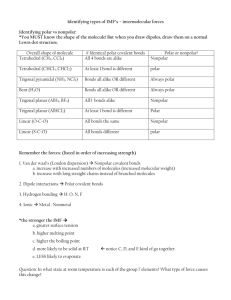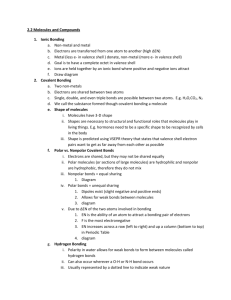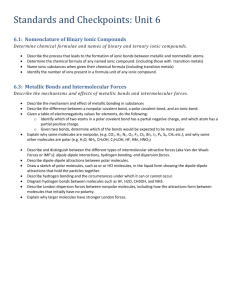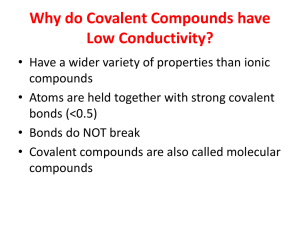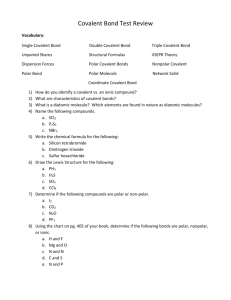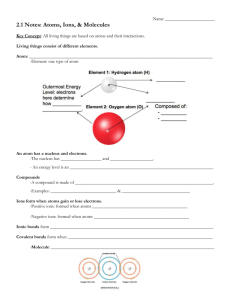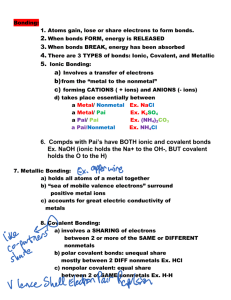101 Ways Bonding IN CLASS 2015 - zago
advertisement
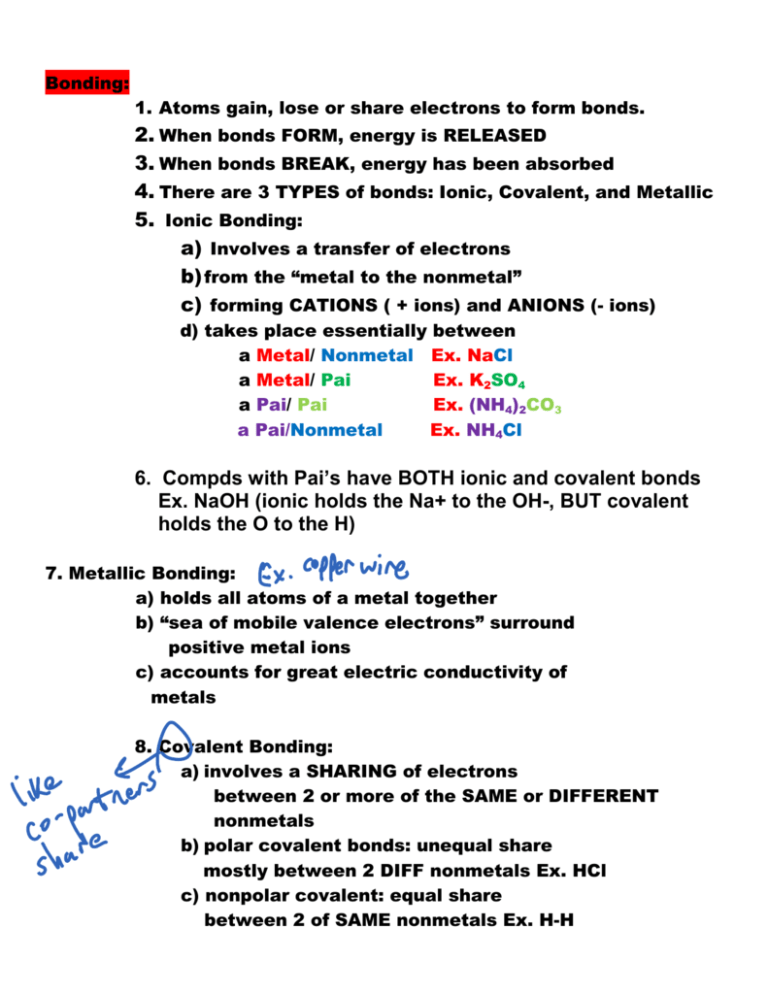
Bonding: 1. Atoms gain, lose or share electrons to form bonds. 2. When bonds FORM, energy is RELEASED 3. When bonds BREAK, energy has been absorbed 4. There are 3 TYPES of bonds: Ionic, Covalent, and Metallic 5. Ionic Bonding: a) Involves a transfer of electrons b) from the “metal to the nonmetal” c) forming CATIONS ( + ions) and ANIONS (- ions) d) takes place essentially between a Metal/ Nonmetal Ex. NaCl a Metal/ Pai Ex. K2SO4 a Pai/ Pai Ex. (NH4)2CO3 a Pai/Nonmetal Ex. NH4Cl 6. Compds with Pai’s have BOTH ionic and covalent bonds Ex. NaOH (ionic holds the Na+ to the OH-, BUT covalent holds the O to the H) 7. Metallic Bonding: a) holds all atoms of a metal together b) “sea of mobile valence electrons” surround positive metal ions c) accounts for great electric conductivity of metals 8. Covalent Bonding: a) involves a SHARING of electrons between 2 or more of the SAME or DIFFERENT nonmetals b) polar covalent bonds: unequal share mostly between 2 DIFF nonmetals Ex. HCl c) nonpolar covalent: equal share between 2 of SAME nonmetals Ex. H-H 9. VSEPR theory=electrons repulse each other. This affects bond angles and shape. Shape etc, helps predict properties. 10. Shapes Chart: pyramidal Trigonal planar tetrahedral bent linear Lone Shared Shape Angle Ex pairs pairs 1 3 11. Dipole: molecule with 2 Di-fferent ends; a dipole has BOTH polar bonds AND asymmetry 12. POLARITY of the WHOLE MOLECULE: Polar Molecules are ASYMMETRICAL ( uneven charge distribution) Ex. H----F, NH3 Nonpolar Molecules are SYMMETRICAL (even charge distribution) Ex. H---H, CH4 13. POLAR MOLECULES must have polar bonds BUT NONPOLAR molecules COULD have either nonpolar OR polar BONDS Bond Type Polar Covalent Nonpolar Covalent Molecular Polarity Polar molecule (dipole) NonPolar Molecule Ex. H-F X Ex. CCl4 Ex. H-H 14. Bonds are between atoms WHILE Forces of attraction (IMF’s) are BETWEEN molecules. Ex. Dipole-dipole, and Hydrogen “Bonding”, and London Dispersion 15. Dipole-Dipole IMF attraction: a weak force of attraction between 2 dipole molecules, in which the slightly + end of one, is attracted to the slightly (-) end of the other. Ex. between HCl and HCl 16. Hydrogen "bonding": Strongest IMF due to EXTREME dipole-dipole IMF; characterized by H---F, H---O, and H---N bonds [et FON Home]; accounts for the high b.p. of water 17. London dispersion: exists between nonpolar molecules despite no polar ends to attract each other until instantaneous (induced) dipole moment forms; increases as molecule distance decreases and as mass increases.
